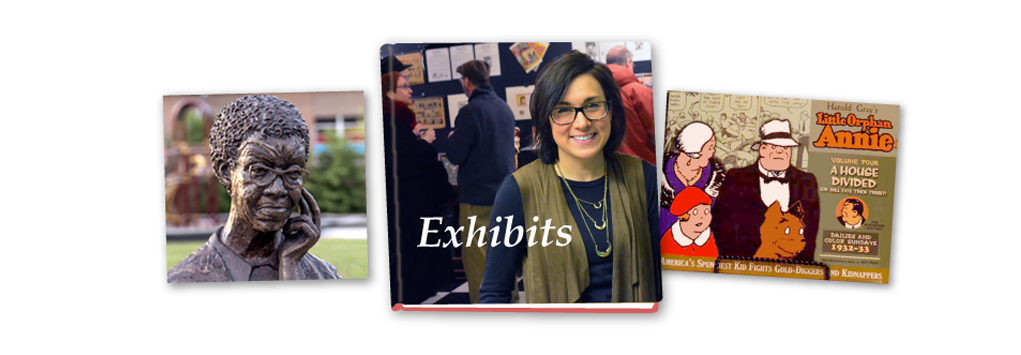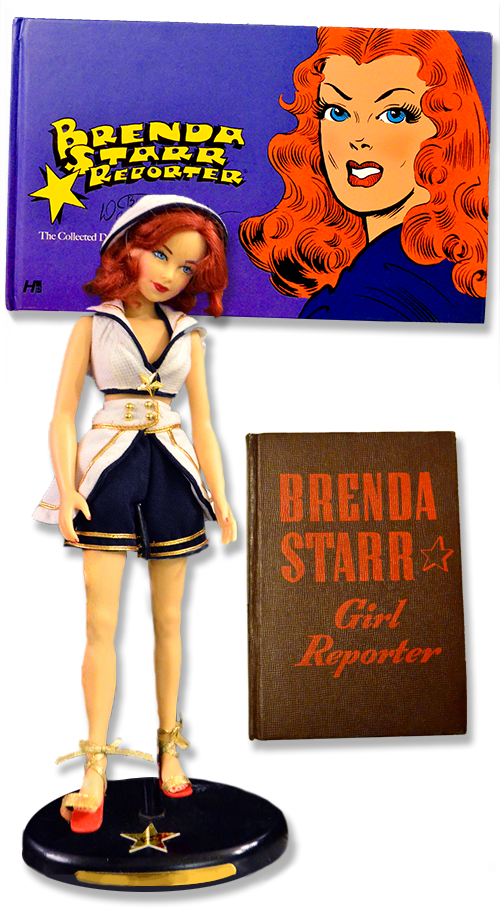
As American men went off to World War II, American women, including the stylish reporter Brenda Starr, went to work. When the strip debuted, Brenda was stuck in her Chicago newsroom grinding out obituaries and baby notices—until she confronted her boss, Mr. Livright, about getting a chance with a “real” story. The determined redhead eventually traveled the globe chasing stories for The Flash, all the while getting entangled in sometimes- preposterous adventures.
In Richard Severo’s New York Times obituary of Messick (who died at the age 98), he summed up the significance of the strip, saying Messick was “a pioneering newspaper cartoonist who fought her way to the top of a man’s profession by creating Brenda Starr, the glamorous red-haired journalist who fought her way to the top of a man’s profession…”
Rita Hayworth inspired the character’s look, while her name came from the era’s beloved debutante, Brenda Frazier. Severo writes, “The Brenda Starr comic strip was a symphony of décolletage, good legs precariously balanced on high-heeled shoes, and Dior-like clothing that no woman would be likely to wear to a newspaper office. During the war she was an ace reporter, chasing spies and other malefactors in cities and in jungles, fighting off sharks, giant squids and other ravenous animals, but selling war bonds, too. Her red hair was always attractively coiffed; her eyes always glistened with tiny starbursts.”
Messick was a testament to how difficult it was for women of her time to break gender barriers. She chose to sacrifice her real name, Dalia, in favor of a gender-neutral name that might at least deter out-of-hand rejections. Though she had studied at the Art Institute of Chicago, had worked steadily as a greeting card designer, and had been drawing comic strips from her teenage years, Messick’s submission to New York Daily News was flatly rejected by publisher Joseph M. Patterson. Patterson’s secretary, Mollie Slott, rescued it from the waste bin. After accepting Slott’s suggestions for revision, Messick eventually won Patterson’s tentative approval.
In later years, Brenda married, divorced, raised a daughter, and witnessed dramatic changes in the newspaper business. Brenda Starr spurred a handful of comic book series, four film/TV adaptations (Joan Woodbury, Jill St. John, and Brooke Shields were among the title character’s portrayers), several collectible doll lines, and a U.S. postage stamp.










